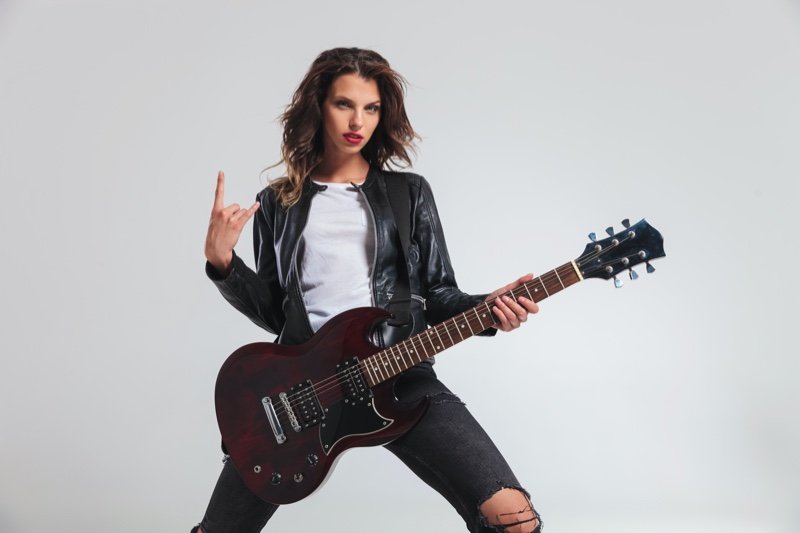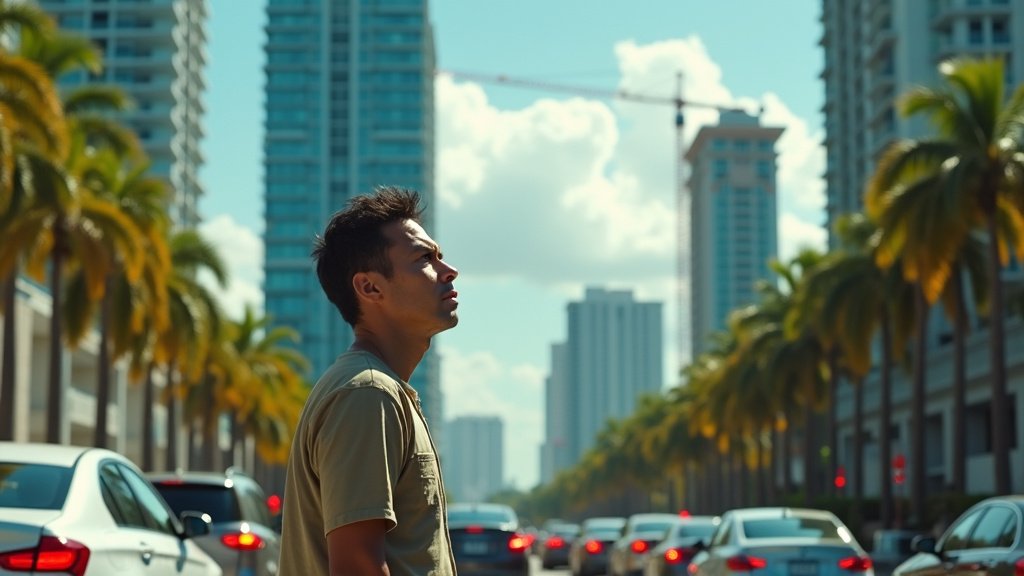Music and fashion are two cultural forces that have always had a profound influence on each other. They are like dance partners, each step and twirl affecting the other. From the rock ‘n’ roll rebellion of the 1950s to the avant-garde styles of K-pop today, musicians have been at the forefront of fashion, setting trends and inspiring countless fans. This article takes a deep dive into how music has shaped fashion through various eras and genres, leaving an indelible mark on the way we dress.
The Rock ‘n’ Roll Era: Leather Jackets and Denim
The 1950s and 1960s were defined by the explosive energy of rock ‘n’ roll. Elvis Presley, with his iconic slicked-back hair, leather jackets, and denim, epitomized the rebellious spirit of the genre. His fashion choices were a stark contrast to the conservative styles of the time, inspiring a wave of teenagers to adopt a more daring look. Elvis’s style was more than just clothes; it was an attitude, a statement of independence and defiance.
The Beatles also played a significant role in shaping fashion during this era. Initially sporting leather jackets and mop-top haircuts, they later transitioned to the mod look with tailored suits and Chelsea boots. This evolution from edgy rockers to polished pop icons mirrored their musical journey and set new fashion standards. Their influence was so profound that fans around the world began emulating their style, from their haircuts to their slim-fitting suits.
The Psychedelic 60s: Bohemian Rhapsody
The 1960s were a transformative time, marked by the counterculture movement and the rise of psychedelic rock. Bands like The Beatles (in their later years), The Rolling Stones, and The Grateful Dead embraced a more eclectic and colorful fashion sense. The psychedelic era was all about breaking free from conventional norms, both in music and in fashion. Think vibrant tie-dye shirts, bell-bottoms, and paisley prints—each piece a statement of individuality and a symbol of the era’s free-spirited ethos.
David Bowie, with his Ziggy Stardust persona, took this a step further by introducing glam rock to the fashion scene. His futuristic, androgynous style challenged traditional gender norms and inspired a whole generation to experiment with their looks. Bowie’s influence extended beyond the music world; fashion designers began incorporating his bold, theatrical style into their collections, further blurring the lines between music and fashion.
The Punk Rock Rebellion
The late 1970s and early 1980s saw the rise of punk rock, a genre that brought a raw, DIY approach to both music and fashion. The Sex Pistols, The Clash, and The Ramones were at the forefront of this movement, using their fashion choices to make bold political statements. Ripped clothing, safety pins, and leather jackets became the uniform of rebellion, a stark contrast to the polished looks of previous decades.
Vivienne Westwood, a pioneering fashion designer, played a crucial role in shaping punk fashion. Her collaborations with The Sex Pistols led to the creation of some of the most iconic punk fashion pieces, like the bondage trousers and graphic t-shirts with provocative slogans. Punk fashion was about more than just clothes; it was a way to challenge the status quo and express dissent. This spirit of rebellion continues to influence fashion today, with punk elements regularly appearing in contemporary collections.
Hip-Hop’s Golden Era: Street Style and Luxury
The 1980s and 1990s were a golden era for hip-hop, a time when the genre’s influence extended far beyond music. Artists like Run-DMC, LL Cool J, and Tupac Shakur brought a distinct street style to the forefront, popularizing baggy jeans, oversized shirts, and sneakers. Run-DMC’s love for Adidas tracksuits and shell-toe sneakers even led to a groundbreaking endorsement deal with the brand, highlighting the commercial potential of music-influenced fashion.
As hip-hop evolved, so did its fashion sense. The 1990s saw the emergence of luxury streetwear, with artists like Notorious B.I.G. and Jay-Z flaunting designer brands like Versace and Gucci. This blend of street style and high fashion created a unique aesthetic that was both aspirational and relatable. Hip-hop fashion was about more than just looking good; it was about showcasing success and individuality.
Grunge and Alternative Rock: The 90s Fashion Revolution
The 1990s also saw the rise of grunge and alternative rock, genres that brought a more laid-back and nonchalant approach to fashion. Bands like Nirvana, Pearl Jam, and Soundgarden rejected the flashy styles of the 80s, opting instead for thrift store finds, flannel shirts, and ripped jeans. Kurt Cobain’s iconic look, with his disheveled hair and layered clothing, became a symbol of the grunge movement.
Grunge fashion was about rejecting mainstream trends and embracing a more authentic, unpolished look. It was a reaction against the excesses of the previous decade, emphasizing comfort and individuality over glamour. This ethos resonated with a generation of young people who were looking for a way to express their discontent with societal norms.
The Indie and Alternative Revival
The 2000s and 2010s brought a revival of indie and alternative music, with bands like The Strokes, Arctic Monkeys, and Florence and the Machine leading the charge. Indie fashion often embraced a vintage aesthetic, characterized by skinny jeans, leather jackets, and a mix of high and low fashion. This era also saw a resurgence of bohemian styles, with flowing dresses, fringe, and floral prints becoming popular again.
Florence Welch of Florence and the Machine became a fashion icon with her ethereal, bohemian style, often featuring flowing gowns and intricate headpieces. Her look inspired a wave of festival fashion, emphasizing a free-spirited, eclectic approach to dressing. Indie and alternative fashion was all about mixing and matching, creating a unique look that reflected one’s personality and musical tastes.
Pop Icons and Their Fashion Footprint
Pop music has always had a significant impact on fashion, with artists like Madonna, Michael Jackson, and Lady Gaga setting trends with their bold and often provocative styles. Madonna’s chameleon-like approach to fashion in the 1980s and 1990s, from her “Material Girl” glamour to her “Like a Virgin” punk-inspired looks, showcased the power of reinvention and self-expression.
Michael Jackson’s signature style, including his iconic military jackets, sequined gloves, and fedora hats, left a lasting legacy in the fashion world. Lady Gaga, known for her avant-garde and sometimes shocking outfits, has pushed the boundaries of fashion, blurring the lines between performance art and style. Each of these pop icons used fashion as a way to amplify their musical personas and connect with their audiences on a deeper level.
K-Pop: The Global Fashion Phenomenon
In recent years, K-pop has emerged as a global cultural force, significantly influencing fashion trends worldwide. Groups like BTS, BLACKPINK, and EXO are known for their meticulously crafted looks, which often feature a mix of streetwear, high fashion, and futuristic elements. The fashion choices of K-pop idols are closely followed by fans and have led to collaborations with major fashion brands.
BTS, for example, has worked with brands like Louis Vuitton, showcasing the growing intersection between K-pop and luxury fashion. The members’ individual styles, from edgy streetwear to elegant suits, highlight the diversity and innovation within K-pop fashion. This influence extends beyond Korea, with fans around the world emulating the styles of their favorite idols.
Electronic Music and Fashion: A Futuristic Fusion
Electronic dance music (EDM) has also played a significant role in shaping modern fashion trends. Festivals like Coachella, Burning Man, and Tomorrowland are not just about the music; they are also fashion spectacles. The EDM scene is known for its bold and futuristic styles, with neon colors, metallic fabrics, and elaborate costumes taking center stage.
Artists like Daft Punk, with their iconic robot helmets, and Deadmau5, with his giant mouse head, have become fashion icons in their own right. EDM fashion is all about pushing boundaries and embracing creativity, much like the music itself. It’s a space where self-expression is encouraged, and the more outrageous the outfit, the better.
The Symbiotic Relationship Between Music and Fashion
The relationship between music and fashion is a dynamic and evolving one, where each influences and inspires the other. Musicians use fashion to express their identity, make statements, and connect with their audience. In turn, fashion designers draw inspiration from the music scene, creating collections that reflect the spirit and energy of different genres.
Fashion shows often feature live music performances, and music videos serve as platforms for showcasing the latest fashion trends. This symbiosis extends to social media, where artists and influencers share their styles, creating a global dialogue around fashion and music. Festivals and concerts are also key sites where fashion and music intersect, with attendees showcasing their unique styles inspired by their favorite artists.
The Business of Music and Fashion
The commercialization of music and fashion has created a lucrative industry where brand collaborations and endorsements are commonplace. Artists like Kanye West and Rihanna have successfully launched their own fashion lines, blending their musical and fashion sensibilities. Kanye’s Yeezy brand, known for its minimalist aesthetic and high price tags, has become a cultural phenomenon, while Rihanna’s Fenty line has been praised for its inclusivity and innovative designs.
These ventures highlight the significant economic impact of the relationship between music and fashion. Musicians are not just influencers; they are entrepreneurs who use their platforms to create and market their own fashion brands. This trend is likely to continue, with more artists leveraging their fame to enter the fashion industry.
The Future of Music and Fashion
As we look to the future, the relationship between music and fashion will likely continue to evolve in exciting ways. The rise of digital technology and social media has already transformed how we consume and interact with both music and fashion. Virtual concerts, online fashion shows, and digital clothing are just a few examples of how technology is shaping the future of these industries.
Sustainability is also becoming a key focus, with both musicians and fashion designers advocating for more eco-friendly practices. Artists like Billie Eilish and Jaden Smith have been vocal about the need for sustainable fashion, using their platforms to promote ethical brands and practices. This shift towards sustainability is not just a trend; it’s a necessary evolution that will shape the future of both music and fashion.
Conclusion
The influence of music on fashion is undeniable and ever-present. From the rebellious spirit of rock ‘n’ roll to the eclectic mix of modern K-pop, music continues to shape and redefine the way we dress. This relationship is a testament to the power of self-expression and creativity, reminding us that fashion is not just about clothes—it’s about making a statement, telling a story, and connecting with others.
Music and fashion are inextricably linked, each enhancing the other in a continuous cycle of inspiration and innovation. As we move forward, this dynamic duo will undoubtedly continue to push boundaries, challenge norms, and inspire new generations to express themselves in bold and creative ways.





